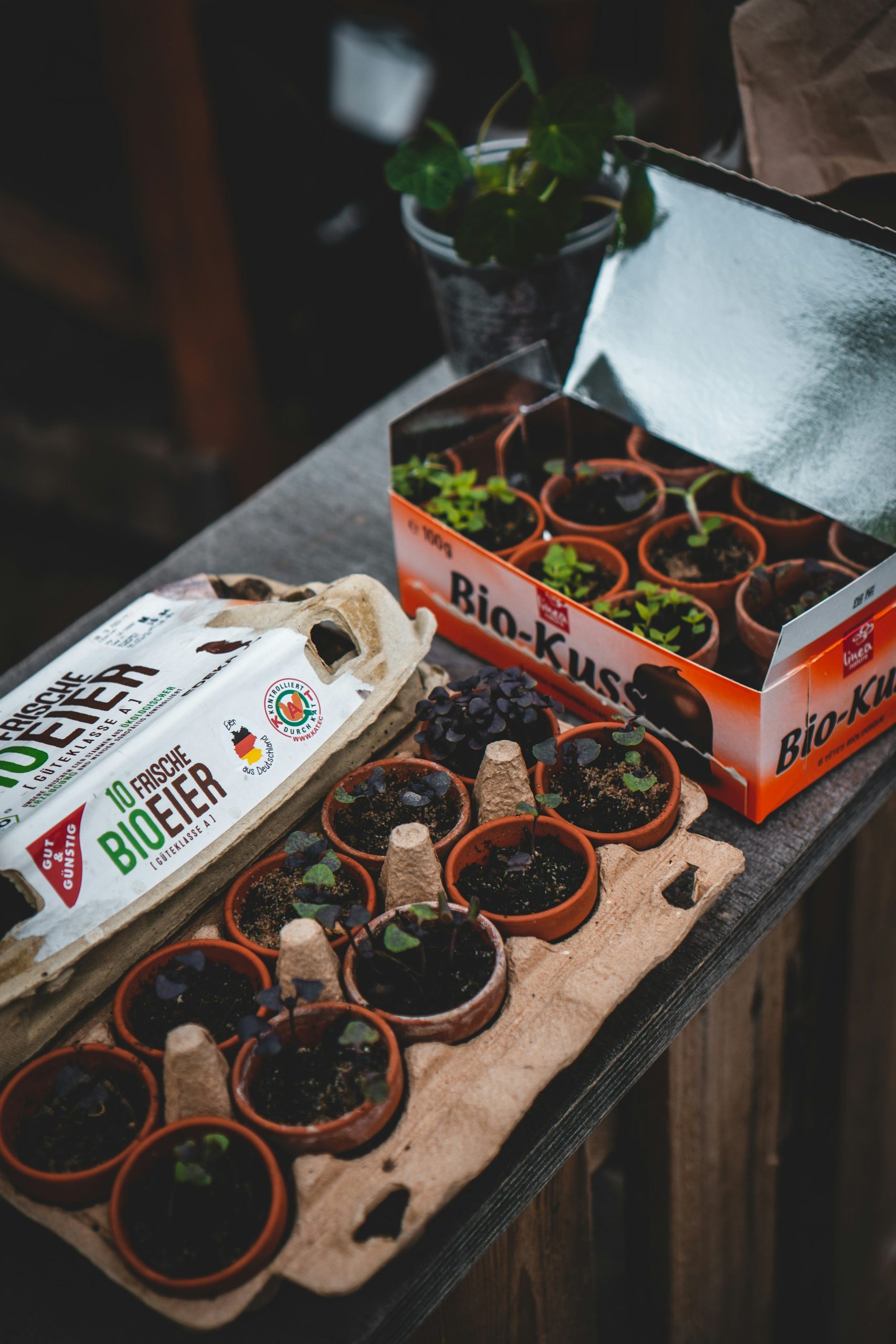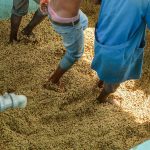Powdery mildew poses a significant threat to organic fruit orchards across the UK, impacting both crop yields and quality. Addressing this challenge requires innovative, eco-friendly approaches that align with sustainable farming practices. This guide offers practical solutions, from natural fungicides to cultural techniques, ensuring a healthy harvest while preserving the environment. Discover how to effectively manage powdery mildew and enhance the resilience of your orchards without compromising your organic commitment.
Understanding Powdery Mildew
Powdery mildew is a widespread fungal disease affecting a variety of plants, including those in fruit orchards. This fungus thrives in warm, dry environments and spreads rapidly, coating leaves and stems with a distinctive white or gray powdery substance. The life cycle of powdery mildew begins with the release of spores, which settle on plant surfaces. Under optimal conditions, these spores germinate and penetrate plant tissues, leading to infection.
Sujet a lire : Effective Strategies to Combat Soil Erosion in Your Sloped UK Garden
Common symptoms of powdery mildew in fruit orchards include a white, powdery coating on leaves, stems, and sometimes fruit. Infected leaves may become distorted, and their growth can be stunted. This disease not only affects the aesthetic quality of plants but also has a significant impact on crops. It can reduce photosynthesis, leading to weakened plants and lower fruit production.
The impact on crops is substantial, as powdery mildew can decrease both yield and quality. Fruits may become smaller, and their market value can drop due to the unsightly appearance. Additionally, severe infections can lead to premature leaf drop, further compromising plant health and productivity. Effective management strategies are essential to mitigate these effects and ensure healthy crop yields.
Avez-vous vu cela : Savor the flavor : top tomato varieties for every garden
Organic Farming Principles
Organic farming is rooted in a commitment to sustainability and environmental stewardship. It prioritises natural processes and cycles, aiming to enhance soil fertility and biodiversity. By avoiding synthetic chemicals, organic farming fosters healthier ecosystems and promotes the well-being of both plants and wildlife.
Central to organic farming is the use of sustainable practices. These include crop rotation, which helps maintain soil health, and the use of organic fertilisers and pest control methods. Such practices not only improve soil structure and fertility but also reduce the risk of disease and pest outbreaks. This holistic approach ensures that farming activities do not deplete natural resources, safeguarding the environment for future generations.
In the UK, specific regulations govern organic fruit farming. These regulations ensure that organic produce meets strict standards, providing consumers with confidence in the quality and sustainability of their food. Farmers must adhere to guidelines that limit the use of synthetic inputs and encourage biodiversity. Compliance with these regulations is crucial for gaining organic certification, which can enhance the market value of the produce. By embracing these principles, organic farmers contribute to a more sustainable and resilient agricultural system.
Preventive Measures Against Powdery Mildew
Implementing effective prevention strategies is crucial in managing powdery mildew in fruit orchards. One of the first steps is careful site selection and orchard layout. Choosing a location with good air circulation and sunlight exposure can significantly reduce the humidity levels that powdery mildew thrives in. Additionally, ensuring adequate spacing between plants can help improve airflow and decrease the likelihood of fungal growth.
Incorporating cultural practices plays a vital role in minimizing the risk of powdery mildew. Regular pruning to remove diseased plant parts and improve air circulation is essential. Moreover, selecting resistant plant varieties can be an effective strategy in reducing susceptibility to the disease.
Orchard management should also focus on maintaining soil health, as healthy soil can bolster plant immunity against infections. Practices such as crop rotation and the use of organic mulches help enhance soil structure and fertility, providing a robust foundation for plant health. By integrating these preventive measures, orchard managers can mitigate the impact of powdery mildew, ensuring healthier crops and more consistent yields.
Eco-Friendly Treatments for Powdery Mildew
In the pursuit of sustainable agriculture, organic treatments for powdery mildew are gaining popularity. These methods offer effective control while minimising environmental impact. The UK market offers a range of organic fungicides, including those based on potassium bicarbonate and sulphur. These substances disrupt fungal cell walls, curbing the spread of the disease without synthetic chemicals.
Natural remedies are also invaluable. Baking soda is a well-known household item that, when mixed with water, creates an alkaline environment hostile to mildew. Similarly, neem oil, derived from the neem tree, acts as a natural fungicide and insect repellent. Its application can prevent spore germination and reduce mildew severity.
For optimal results, understanding the correct application methods and timing is crucial. Fungicides and natural remedies should be applied in the early morning or late afternoon to avoid leaf burn from the sun. Regular applications, especially during the early stages of infection, enhance effectiveness. Ensuring thorough coverage of leaves and stems is essential to prevent the fungus from taking hold. By integrating these eco-friendly treatments, farmers can protect their crops while maintaining a commitment to environmental stewardship.
Integrated Pest Management (IPM) Strategies
Integrated Pest Management (IPM) is a holistic approach to pest control that aims to maintain an ecological balance in fruit orchards. It involves a combination of techniques designed to manage pests effectively while minimizing environmental impact.
The principles of IPM include understanding the life cycle of pests, using cultural and biological controls, and employing physical barriers when necessary. By focusing on prevention and monitoring, IPM reduces reliance on chemical pesticides. This not only protects the environment but also promotes the health of the plants and the surrounding ecosystem.
A key component of IPM is the role of beneficial insects in managing powdery mildew and other pests. Predatory insects and mites can naturally control pest populations, reducing the need for synthetic interventions. Introducing or conserving these beneficial species helps maintain a balanced ecosystem within the orchard.
Monitoring and assessment techniques are essential for effective IPM. Regular inspections and the use of traps or indicators can help identify pest presence and activity levels. By understanding pest dynamics, farmers can make informed decisions about when and how to implement control measures, ensuring efficient and sustainable pest management.
Case Studies of Successful Management
Exploring case studies of UK organic orchards provides valuable insights into effectively managing powdery mildew. These success stories highlight practical strategies that have proven effective in real-world settings.
One notable example is an orchard in Kent that implemented a comprehensive Integrated Pest Management (IPM) approach. By focusing on cultural practices such as regular pruning and maintaining soil health, the orchard significantly reduced powdery mildew incidence. Additionally, the use of natural remedies like neem oil and baking soda played a crucial role in their success.
Another success story comes from an organic orchard in Herefordshire. This orchard emphasised the importance of selecting resistant plant varieties and ensuring adequate plant spacing for improved air circulation. These strategies were complemented by the application of organic fungicides, which helped maintain a healthy balance in the ecosystem.
Lessons learned from these case studies underscore the importance of a holistic approach. Combining preventive measures with eco-friendly treatments and regular monitoring can effectively manage powdery mildew. Expert insights suggest that adaptability and continuous learning are key to sustaining success in organic orchards. By applying these strategies, farmers can enhance crop health and yield.
Local Best Practices and Expert Recommendations
Understanding best practices for managing powdery mildew in the UK requires insights from local agricultural extension services and organic farming experts. These authorities provide tailored recommendations that address the unique climate and conditions of the region.
Expert advice often emphasizes the importance of selecting plant varieties that are naturally resistant to powdery mildew. This proactive approach can significantly reduce the risk of infection. Additionally, experts recommend maintaining optimal plant health through balanced nutrition and regular monitoring.
Regional specifics play a crucial role in shaping effective strategies. For instance, the UK's varied climate necessitates adaptable solutions. In wetter regions, ensuring proper drainage and avoiding overhead watering can help minimize humidity, a key factor in mildew proliferation.
Local agricultural extension services often advise on the timing of interventions. For example, applying treatments during early morning or late afternoon can enhance their effectiveness while reducing the risk of leaf burn. They also recommend integrating cultural practices, such as pruning and spacing, to improve air circulation and sunlight exposure.
By incorporating these best practices and expert insights, farmers can develop robust strategies that align with the UK's specific agricultural landscape, ultimately enhancing crop resilience and yield.
The Role of Research and Development in Solutions
In the realm of sustainable agriculture, ongoing research is pivotal in developing effective solutions for managing powdery mildew. Current studies focus on understanding the fungus's biology and environmental interactions, aiming to devise innovative strategies for control. This research is crucial for creating more resilient agricultural practices that can withstand the challenges posed by this pervasive disease.
Innovation in organic fungicides and treatments is at the forefront of these efforts. Scientists are exploring natural compounds and biocontrol agents that can offer effective alternatives to synthetic chemicals. These innovations not only target the fungus but also support the overall health of the ecosystem, aligning with the principles of sustainable agriculture.
Collaborations between universities and farmers are instrumental in translating research findings into practical applications. By working together, they can test new treatments in real-world settings, refining approaches to ensure effectiveness and feasibility. These partnerships facilitate the exchange of knowledge and resources, accelerating the development of sustainable solutions.
The synergy between research, innovation, and collaboration is essential for advancing powdery mildew management. Through these concerted efforts, the agricultural community can enhance crop resilience and productivity while maintaining environmental integrity.
Certification and Compliance for Organic Treatments
Navigating the organic certification landscape in the UK is essential for farmers dedicated to sustainable practices. This process ensures that the farming methods align with organic standards, which prohibit synthetic chemicals and promote ecological balance. To achieve organic certification, farmers must adhere to stringent guidelines that encompass soil health, pest management, and product selection.
Compliance with these standards is crucial, as it validates the farm's commitment to sustainability and enhances the marketability of its produce. Non-compliance can result in the loss of certification, affecting both reputation and sales. Therefore, regular audits and inspections are conducted to ensure adherence to the prescribed practices.
When it comes to product selection, only those approved for organic farming can be used. This includes organic fertilisers, pest control agents, and fungicides. The UK maintains a list of certified products, which farmers must consult to ensure their practices remain compliant. Selecting the right products not only supports plant health but also aligns with environmental stewardship goals.
By understanding and following these processes, farmers can maintain their organic status and contribute to a more sustainable agricultural system.
Future Directions in Powdery Mildew Management
In the quest for sustainable solutions, the future of powdery mildew management is shaped by emerging trends in agriculture. One promising direction is the development of biological control agents that leverage natural predators or antagonists to combat the fungus. These agents offer a sustainable alternative to chemical fungicides, aligning with organic farming principles.
However, ongoing challenges persist for organic fruit growers in the UK. The variability of weather patterns poses a significant hurdle, as fluctuating humidity levels can exacerbate powdery mildew outbreaks. Additionally, the limited availability of resistant plant varieties remains a concern, requiring continuous research and development efforts.
To address these challenges, potential solutions include enhancing genetic resistance through selective breeding and biotechnology. By focusing on breeding programs that prioritize resistance traits, growers can cultivate crops that are inherently less susceptible to infection. Moreover, integrating advanced monitoring technologies, such as remote sensing and data analytics, can provide real-time insights into environmental conditions and disease progression, enabling more precise interventions.
The future of powdery mildew management lies in a collaborative approach, combining scientific innovation with practical applications to ensure resilient and productive agricultural systems.
















